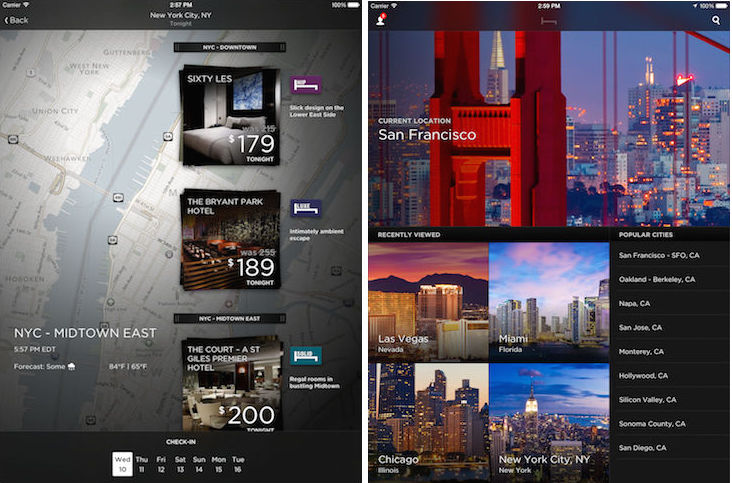
I want to start my predictions by asking a few simple questions: Why does anyone care about design? Why should businesses care about design? Why should one year in design make a difference over any other? The very nature of design is elastic: sometimes following, sometimes leading. The truth is, if we’re really looking for what’s next in design, I have to read the tea leaves as they appear in my cup—and that is design in the world of branding.
In doing just that, I couldn’t shake one feeling: There are a few groups that have really moved us forward.
The first, interestingly enough, is organizations with products and services that don’t come in a box. They usually have a level of complexity to them in how they are sold and they often are higher stakes. In other words, they’re not selling bubble gum—think of companies in the tech and industrials space, or even institutions in higher-education. The second group? Individual designers who have, above all, reminded us that the audience’s experience is fundamental to what we do.
SEE ALSO: A New Focus on Human-Centred Design
These groups don’t seemingly have a lot in common, but they overlap in a perfect area: They both are focused on creating value for brands through interactions. For those not selling bubble gum, it’s easy to see why: There is no one thing that gives brand meaning, and designing meaningful interactions is what helps accomplish this. Similarly, individual designers are able to approach the process with unique lens: One that doesn’t silo product development, marketing, and design—which is exactly how audiences think.
These groups have been at the forefront of three design trends I believe we’ll see more of in 2015.
Smaller logos, bigger experiences.
In my twenty-five years in branding, not much surprises me—but this year, I had a first: One of our clients actually asked for the logo to be smaller. It made me realize just what a significant movement we’re seeing: Design is now less about a traditional corporate identity, and more about an ensemble experience for the audience.
Many of my favorite apps are built with this perspective in mind. Look at Hotel Tonight, which does not treat its identity as something separate, but instead integrates it into an experience it knows the user will enjoy. It ignores everything we’ve traditionally seen with the booking experience: There are no stars, or crazy, algorithm-based user reviews. Instead, personality-driven labels provide easy categorization. Big visual moments surround the properties and their amenities. Its main screen focuses on the only two features a user is interested in seeing: plan and price.
Smaller screens, bigger moments.
What I find so interesting about the ‘digital’ space is how many of the best-designed experiences focus on a user’s physical interaction. The apps that do well don’t try to copy the experience you’d have with a book or even a website; instead, they use tablets and mobile to their full and unique advantage. They create a clean, physical connection with the user.
I love comparing one of my favorite apps, Peek, to feature-heavy counterparts like iCal and Microsoft Outlook. Square Mountains, which built the app, talks about it as “the calendar, humanized.” The designers behind Peek know the value of each bit of mobile screen space, and the value of each touch interaction. They provide only the detail the user requires, leaving massive feature sets behind and instead creating an on-the-go experience for people to use when they actually need it.
Less about roles, more about culture.
Nest’s Tony Fadell has summed this up as an East Coast vs. West Coast dichotomy—on the East Coast, you have big, established companies whose dominance in the marketplace has not so far necessitated this merger of disciplines. Product development leads and design and marketing are an afterthought. On the West Coast, you’ll find that fierce startup competition—together with the entrepreneurial spirit—have fostered a landscape in which the brand and product are essentially the same thing; Nest’s own purchase experience proves just that.
And I’m excited to say that we’re seeing this “West Coast” approach continue to gain traction: Starbucks has created concept stores in which every aspect lives its sense of warmth and welcome, instead of just words on a wall and graphic decoration. Companies like Johnson & Johnson have hired Chief Design Officers. We need to continue this evolution until we reach a point in which design isn’t just a role, but instead is embedded in the culture of an organization.
It’s this shift that excites me most for what’s to come. We’re beyond touch points, and customers are closer to the center of their own experience than ever before— they’re smarter and more focused. They don’t silo their own experiences with brands, or think about technology, marketing, and product development separately.
They have one experience: A set of larger moments that matter to them, both emotionally and functionally. And as we seek to think the same way, design will be crucial to helping us get there in 2015—and to building brands one powerful moment at a time.
Images: Lance Anderson, Peek, HotelTonight

